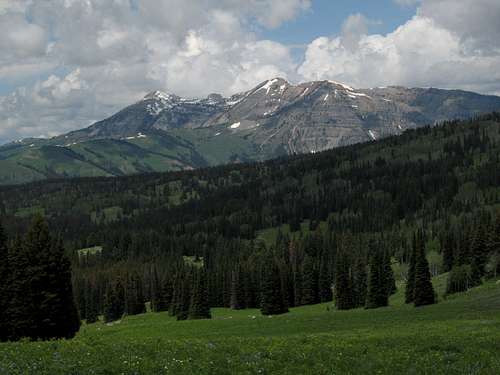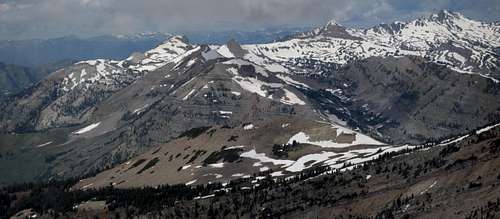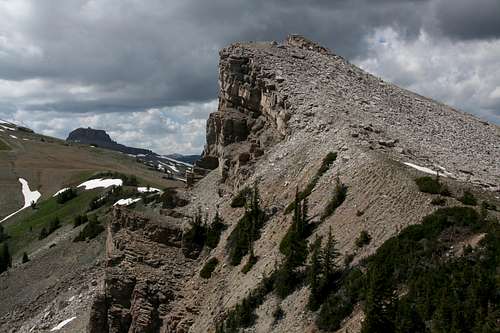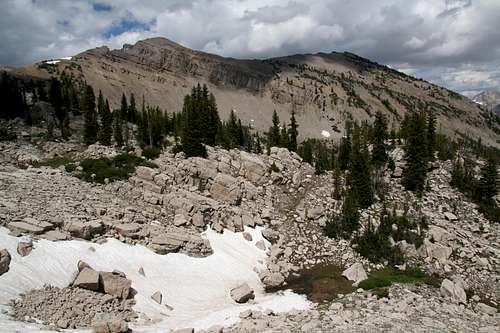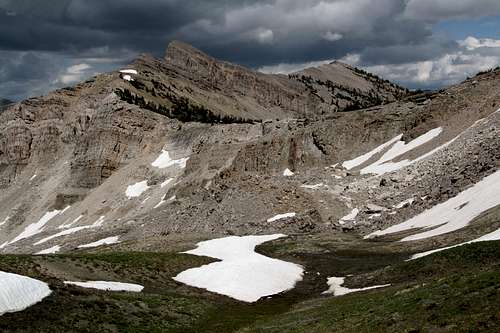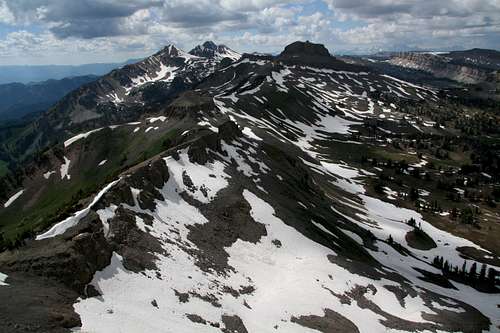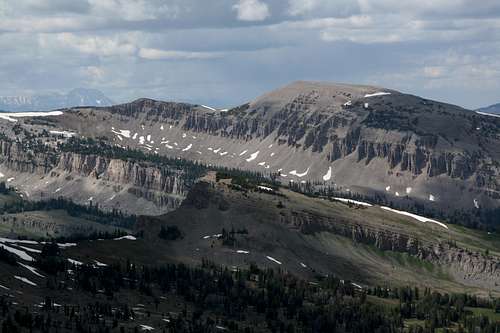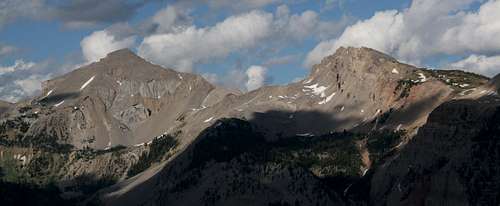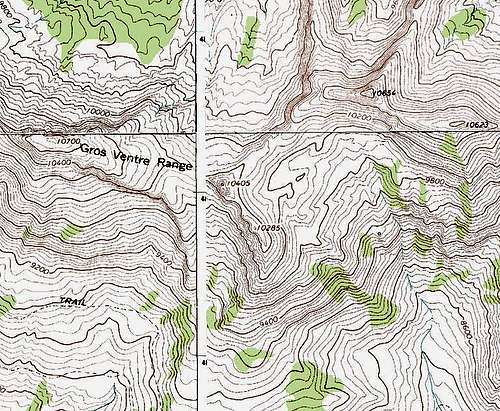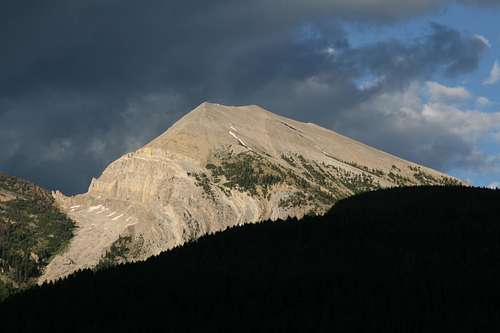-
 8862 Hits
8862 Hits
-
 94.21% Score
94.21% Score
-
 46 Votes
46 Votes
|
|
Mountain/Rock |
|---|---|
|
|
43.37712°N / 110.48691°W |
|
|
Scrambling |
|
|
Summer |
|
|
10654 ft / 3247 m |
|
|
To Correct a Legend?
Who am I to say Orrin Bonney was wrong? In Guide to the Wyoming Mountains and Wilderness Areas, he says this of Terrace Peak:
"Huge terraced peak NW above Granite Hot Springs with its E cliff bands sheering down to Granite Cr below. Probably routes of ascent would be via N or S stream-bearing gullies."
This all looks and sounds perfectly reasonable to anyone driving up Granite Creek Road or looking at a map. However, Bonney gives the elevation as 10,700', and that is where the problem occurs. Starting west from Granite Creek on a theoretical climb up the cliffs to the ridge above, one would first cross Point 10,420 (not marked-- interpolated elevation), then go over Point 10,623, followed by Point 10,654 , and then drop over 500' to a saddle before proceeding to Point 10,700, what Bonney identifies as Terrace Peak.
So in other words, what Bonney calls Terrace Peak actually should not be Terrace Peak and Point 10,654 should. And, having climbed both, I can say that both peaks have very different characters, and, if one were aiming just for one or the other, the easiest and most logical approach for each would not be the same. Perhaps today's prominence rules were not yet in effect when Bonney wrote his guide, but the apparent fact that he had not climbed the peak as of publication time suggests he made an error or was working with faulty information.
Thus, this page will cover Point 10,700 (Bonney's Terrace Peak), Point 10,654 (what really should be Terrace Peak), and a small but interesting peak in between them-- Point 10,405-- that does not have the prominence to be a ranked peak but is a worthwhile scramble along the way.
And in fact, the peaks are all so close together that climbing them together rather than in separate outings just makes a lot more sense. The attached route page will assist with that.
Point 10,700
Usually, I come up with a nickname for an unnamed peak I climb. It is not out of vanity; I don’t fancy that I have the authority to go around establishing names for peaks on my say-so alone. Instead, I do it to add a little extra character and appeal to the peak, and since I base the name on some outstanding or nearby geological feature, I feel it generates more attention and interest and helps a page user find or identify the peak.After all, not many people are too likely to be seeking route information about Point 10,700 in a lightly used mountain range in a vast mountainous region. But this time, anything clever or sensible eludes me. There is no exceptionally remarkable rock feature at or near the summit. No lake is near. The headwaters of Boulder Creek are not far (though not directly below), but there are two other peaks much closer to Boulder Creek than this one is. There is a drainage on the north side of the summit, but it is unnamed.
Again, this is the peak Bonney refers to as "Terrace Peak" even though it really shouldn't be and should have its own name both because of its prominence and because of the difference in character between it and what should be Terrace Peak. Point 10,700 is one of several peaks of a long east-west ridge complex in the Gros Ventre Range. Most are nameless. Only two-- Pinnacle Peak and Gros Peak-- have names. 10,700’ probably is not even the true elevation; it seems to be an interpolated one based on the contour lines, as the summit is above the 10,680’ contour. The maximum reading I got with my GPS device was 10,673’, but I did not let it sit long enough to provide the most accurate reading that it could. By measures of vertical rise from saddles, though, the peak qualifies as a ranked one for those interested in that sort of thing. Steep mountainsides on the north and south sides of the peak drop to basins and drainages, vertical rise from the saddle to the west is about 500’, and vertical rise from the saddle to the east is also about 500’.
The summit has neither a cairn nor a register; it is a truly "wild" peak, and probably a handful of people, at the very most, visit it each year.
Point 10,405
Point 10,405 is another of several peaks on this very long ridge in the Gros Ventre Range. It is a small but striking peak, well into the wilderness, and almost never climbed. Without a doubt, it will satisfy those who seek isolation when they go to the mountains. This peak will not appear on any lists of ranked peaks; it only has about 250’ of vertical rise from the saddle between it and Point 10,654, and only about 200’ from the saddle between it and Point 10,700.But it is hard to argue that the peak is just a bump along the way to one of those summits. Too much distance separates them. The peak clearly “stands out.” Point 10,700 is broad and gentle, but Point 10,405 is small, pointed, and steep; the former features grassy slopes leading to the summit while the latter is a mass of shattered limestone. The peak is more similar in character to Point 10,654, but from that second peak, Point 10,405 looks far away and totally separated.
“Pillar Peak” is my pet name for the peak. The title refers to a spectacular limestone pillar just west of the peak’s highpoint. Honestly, I first thought of “Pinnacle Peak,” but I knew that was already taken. So as I always say in such circumstances, if anyone knows of any official or unofficial name for this peak, please let me know and I will gladly make the necessary changes.


